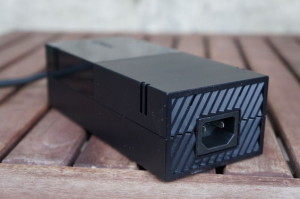Bone Idle
There has been some good news this week for any Xbox fan looking to pick themselves up a day Bone edition of Microsoft’s newest console a mere five months after launch day, as brand new launch editions are back in stock over at Amazon! It must be stressed that Microsoft’s planning and production of their Xbone console has been something of an unmitigated success, so much so that their retail channels have been completely flooded with unsold consoles, far outstripping demand. Since its launch the Xbone has been produced in batches of about one million consoles per month, indicating that Microsoft anticipated Xbone sales to be roughly similar to current PS4 sales, and resulting in over seven million consoles being produced, of which only five million have been passed through to retail channels, and only four million have been sold through to consumers. In short, Microsoft has likely already produced all of the consoles that they will need for the remainder of 2014.
The launch of the Xbone console has been largely credited for Microsoft’s Devices and Consumer Hardware division’s year-on-year spike in revenue from $1.4 billion to $1.97 billion – a forty-one percent increase – yet the division’s cost of revenue also jumped by seventy percent, owing to the increased expense of manufacturing the Xbone console. It is due to this mounting cost of manufacture [as well as perhaps the imploring insistence of retailers] that Microsoft’s CFO, Amy Hood, has this week heavily implied that Microsoft will be looking to either slow or completely halt Xbone manufacture in order to sell existing stock. More specifically Hood signaled a “ channel inventory drawdown for Xbox consoles” and indicated that “ we do expect to work through some inventory in Q4”.
A temporary halt of production makes a certain kind of sense for Microsoft who are spending big money to produce consoles that consumers are not buying, and it certainly makes sense for beleaguered retailers who would now be free to sell their existing stock rather than being inundated with ever increasing shipments as warehouses grow overfull. A surfeit of stock is also a huge downward pressure on the retail pricing of a console which is already overly expensive at five hundred dollars. That said, altering hardware production lines ahead of schedule is said to be a task akin to turning around the Titanic, and breaking or altering any existing contract with the manufacturing plants in question could prove to be a very costly undertaking indeed. It is possible that Microsoft’s initial contract only ran for the console’s initial six month launch window, but infinitely more likely that it was intended to span the first year or more of the console’s life. This author notes that it seems particularly opportune that Microsoft have helped excavate the notorious E.T. landfill this week, seeing as Microsoft may soon require all the storage space it can get its hands on in order to house rapidly accrueing Xbone stock.
That Has Got to Stinga!
The fall of Zynga has been nothing if not as riveting as their games are not. For a very brief moment it was the toast of the investment community, and then the bubble burst and the company has been hemorrhaging value, revenue, and customers ever since. Lusipurr.com has been reporting on Zynga’s fall from grace for a while now, yet it would seem that the company’s worst days are not yet behind it – especially now that Microsoft alumni Don Mattrick has arrived on scene to bolster the ailing company with his bad ideas.
Since quarter one of 2013 Zynga has lost around half of its active users, plunging from 253 million active users per month to a mere 123 million users. Consequently earnings are down from a four million dollar profit for quarter one of 2013 to a loss of sixty-one million dollars for quarter one of 2014. Total revenue is also way down, dropping from $264 million dollars in quarter one of 2013 to $168 million dollars in quarter one of 2014. More concerning still is the fact that the proportion of Zynga’s revenues which are derived from Farmville and Farmville 2 have proportionally grown over the course of the year to the extent that Farmville revenues now equal the earnings of all other Zynga game titles – which obviously begs the question of where the company will be once the earning power of the Farmville franchise is spent.
Games Were Temporarily Available For the Vita
There was much rejoicing this week when, following PSN server maintenance, all available PSN PSP and PS1 Classics were suddenly made available for purchase on Sony’s PS Vita. The games included many high profile titles that had been conspicuous in their absence, such as Gran Turismo, the original Crash Bandicoot trilogy, the Spyro games, Metal Gear Solid: Portable Ops, and Valkyria Chronicles II. Jubilation was short-lived however, as Sony, realising that these games had been made available for purchase, promptly rescinded access to them – Queue sad faces all around.
In actuality this content was probably made available either through a bug in the software, or perhaps Sony had enabled a debug mode during the maintenance period and then had forgot to disable it again before going live – either way what occurred has served to raise a very important question: why do we not have access to this content? The Vita is currently hurting for new content, and these titles are among some of the most cherished to have ever been released, yet it seems that the Vita faithful are to be denied these gems through the arcane fuckery that is video game licensing agreements. Thanks, Obama!


